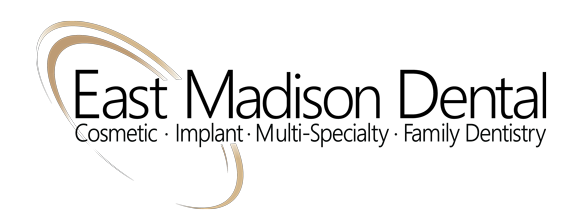Clear Aligners As Low As $115/month
Dreaming of a straighter smile? Call East Madison Dental in Tenafly today to schedule your free consult and enjoy clear aligner therapy for as little as $115/month!
For most of our patients at East Madison Dental Tenafly, achieving a healthy, beautiful smile is the reason for choosing to receive orthodontic care. If you’re self-conscious about your smile, Invsialign® and SureSmile clear aligners can transform the way your smile looks and feels.
When your treatment is complete, you will have the smile you’ve always dreamed of as well as the confidence to show it off! For our dental team, we want you to feel comfortable and confident throughout your entire orthodontic experience. That's why our dental practice is dedicated to making sure that you receive the quality care you deserve, using the latest digital tools to provide top clear aligner treatment in Tenafly, NJ and beyond!
How Long Does Invisalign Treatment Take?

Before beginning your orthodontic treatment with us at East Madison Dental, your doctor will discuss all of your options and provide an estimate of how long your full treatment may take and all the information you need, including expected treatment costs.
How Does Invisalign Work?
Invisalign clear aligners are a series of invisible, removable, and comfortable acrylic trays that straighten your teeth like braces. Not only are the aligners invisible, they are also removable, allowing you to eat and drink what you want while in treatment. Plus, this helps to make brushing and flossing less of a hassle. The aligners are comfortable and have no metal to cause mouth abrasions during treatment.
Your custom-made aligners will be made of Invisalign’s proprietary SmartTrack® material. They’re virtually invisible, so most people won’t even notice you’re wearing them during your teeth straightening treatment. Your clear aligners are designed to be worn 20 to 22 hours a day for the best results, and take them out only to eat, brush, and floss.
As you wear each set of aligners, your teeth will gently and gradually shift into place. There’s never been a better time to straighten your teeth with the most advanced clear aligner in the world. East Madison Dental Tenafly is proud to be a certified provider of Invisalign clear aligners!
Why Choose Invisalign?
Invisalign clear aligners offer a clear, convenient, and comfortable option to achieve the smile you’ve always wanted. Many of our patients choose Invisalign over traditional metal braces for the following advantages:
- Faster treatment: With weekly aligner changes, you’re on your way to the smile you want even faster. Depending on your response to treatment, particularly in mature adults, we may consider longer periods between aligner changes.
- Proven results: SmartTrack® material and SmartForce® features are clinically proven to improve control of tooth movement with Invisalign clear aligners
- Better fit: Aligners made from SmartTrack material are comfortable, fit well, and are easy to put on and take off.
- Effective orthodontic care: Invisalign clear aligners can treat a wide range of teeth-straightening conditions, including crossbites, crowding, open bites, gapped teeth, overbites, and underbites.
- Virtually invisible aligners: Most people won’t even know you’re going through treatment, because Invisalign aligners are virtually invisible!
- Comfort: Invisalign clear aligner trays are not only smooth and comfortable to wear, but they’re also removable. That means you can continue doing all the things you normally would, from brushing and flossing to eating whatever you like.
- Convenience: Invisalign treatment is ideal for your busy schedule, since you only need to visit our office every six weeks.
SureSmile® Clear Aligners
SureSmile is an orthodontic system that works with your dentist to provide ultra-customized smile results! Powered by advanced digital technologies, your SureSmile treatment will start with our dentist taking clear images of your smile. From there, our team can work directly with the SureSmile Digital Lab to create your series of customized clear aligners. These aligners will shift your teeth into a straighter position over time, to achieve your ideal results.
Your Orthodontic Consultation

We will use a scanner such as the iTero® digital scanning system to create fast, precise 3D digital images of your teeth. Then we will map out a precise treatment plan, including the exact movements of your teeth and how long your treatment will be. You’ll even get to see how your teeth will move and preview your new smile.
As you wear each set of aligners, your teeth will gently and gradually shift into place. We may recommend that you begin wearing a new set of aligners every week and schedule checkups at our Tenafly, NJ dental office every six weeks or so.
Taking Care of Your New Smile
When your treatment is complete, ask us about a Vivera® retainer. Vivera retainers are custom-made using the same state-of-the-art technology as Invisalign clear aligners.
Straighten Your Smile with Invisalign
To learn more about the Invisalign system and all your orthodontic treatment options, contact us to get started by scheduling a consultation with our team. We look forward to helping you achieve your best smile!

